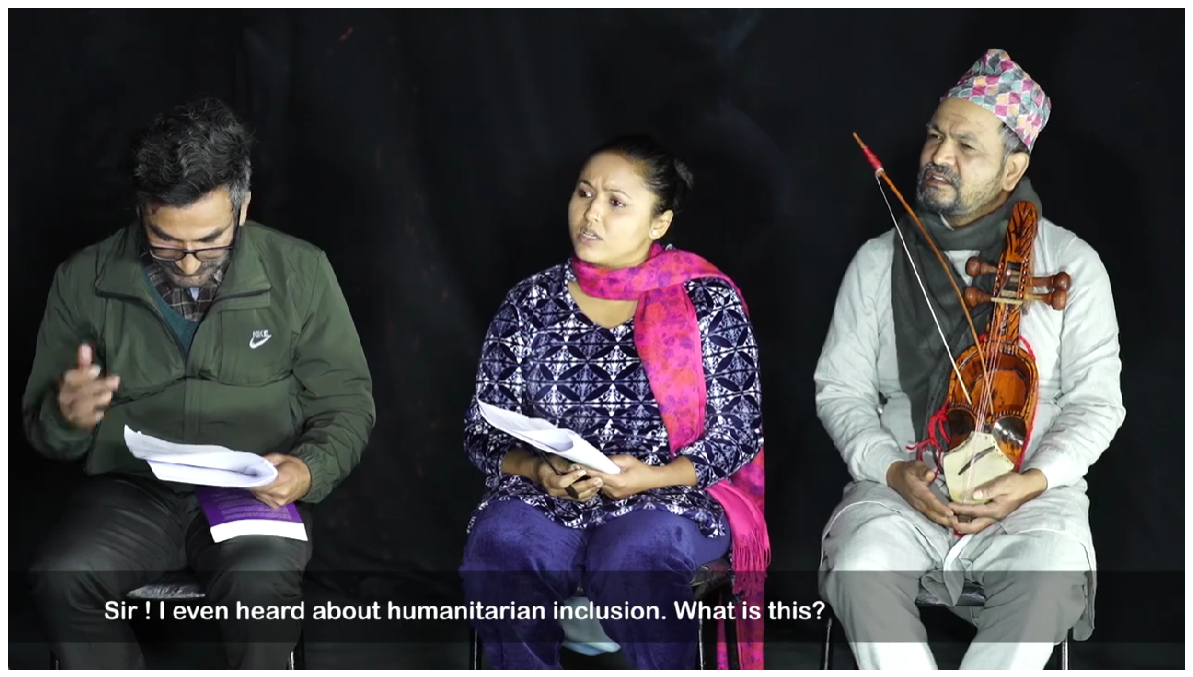Localising and institutionalising the Sphere Minimum Standards in Nepal
By Dr. Raju Thapa, Sphere focal point representative
 |
 |
 |
|---|
The Sphere Handbook is the benchmark set of Minimum Standards, actions, indicators and guidance for humanitarian response, and has been widely used by NGOs, INGOs, UN agencies, and others for the last 25 years.
The Disaster Preparedness Network (DPNet), as Sphere focal point and Secretariat of the National Platform for Disaster Risk Reduction, worked with the Ministry of Federal Affairs and General Administration (MoFAGA); the National Disaster Risk Reduction and Management Authority (NDRRMA); the Sphere Secretariat; and various local, national and international NGOs to institutionalise and localise the Sphere Humanitarian Charter and Minimum Standards in Nepal.
Support from humanitarian and development partners[1] in the form of a basket fund enabled DPNet to conduct an extensive Sphere training program, and to translate not only the Sphere Handbook, but also the Minimum Economic Recovery Standards (MERS), the Minimum Standard for Market Analysis (MiSMA), and the Humanitarian inclusion standards for older people and people with disabilities (HIS) into Nepali – a process that included consultations with over 3,000 experts and organizations.

Mock-ups of the Sphere, MiSMA, MERS and HIS handbooks in Nepali
As with any translation and dissemination programme, there were several barriers to overcome. DPNet used innovative communication techniques, such as folk songs and dramas, to raise awareness and overcome the challenge of convincing local people of the value of Sphere minimum standards.

An image from a Sphere theatre performance
Sphere drama full recording (in Nepali with English captions, 80 minutes):
https://www.youtube.com/watch?v=oNl0blOsx04
Short version (6 minutes):
https://www.youtube.com/watch?v=8u8AB56sWM8
DPNet learned many lessons during the programme, including that good coordination and networking skills are crucial to stakeholder engagement, that contextually specific innovative methods can be used to raise awareness, and that collaboration with government actors is essential for effective disaster management.
Following the translation of the Sphere Handbook, DPNet printed 2,500 copies and distributed them to all 753 local government offices in Nepal and to over 400 disaster risk reduction (DRR) trainers.
Through collaboration with the government, the MoFAGA Disaster Risk Management Localization Manual[2] now includes a module on humanitarian principles and standards, including Sphere’s Protection Principles and the Core Humanitarian Standard (CHS). By December 2022, DPNet’s government-supported capacity building programme had reached over 19,500 staff and community representatives!

Front cover of the MoFAGA DRR Localization Manual
DPNet will continue to collaborate with government actors and study the impacts of widespread adoption of the ‘Sphere Approach’ at the field level to ensure that the people of Nepal are better prepared for disasters, that humanitarian assistance is high-quality, and that humanitarian actors are accountable for their actions.
Established in 1996, DPNet-Nepal is a network of 97 international and national NGOs, UN agencies, and academic institutions working in the field of DRR and management in Nepal. Representing all seven provinces of Nepal, the network aims to coordinate, collaborate, learn, and share experiences to avoid duplication during emergency responses in the country.
Over the last 25 years, the Sphere Handbook has been translated over 70 times, mostly through local initiatives led by Sphere focal points. DPNet’s translate and disseminate programme for the 2018 edition is notable for its vast scale and array of outcomes. The Sphere secretariat thanks the DPNet team for their passion and perseverance to bring Sphere, and its partner standards, to every corner of Nepal.
Learn more about Sphere Nepal’s impressive range of activities:
https://www.dpnet.org.np/sphere-nepal
DPNet previously translated the INEE Minimum Standards for Education into Nepali:
https://inee.org/sites/default/files/resources/_INEE_Minimum_Standards_Handbook_2010_Nepali.pdf
Download the Sphere Handbook in many languages from here:
https://spherestandards.org/handbook/editions/
Find other Humanitarian Standards Partnership (HSP) handbooks in several languages here:
https://hspstandards.org/handbooks/#section-1
[1] DPNet is grateful to ACT Alliance/ICCO Cooperation/The Lutheran World Federation Nepal, ActionAid Nepal, Caritas Nepal, Christian Aid, DanChurchAid, INF Nepal, Oxfam in Nepal, Plan International Nepal, USAID/Tayar Nepal, World Vision International Nepal, and Save the Children for their contributions to the basket fund.
[2] Disaster Risk Management Localization Manual: An Operational Training Manual for DRM Capacity Building of Local Governments, Ministry of Federal Affairs and General Administration (MoFAGA), Section 13: Humanitarian Principles, Core Humanitarian Standard and GESI in DRM,
https://nepal.iom.int/sites/g/files/tmzbdl1116/files/documents/Disaster_Risk_Management_Localization_Manual.pdf
